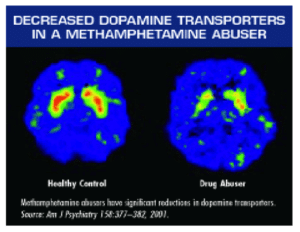Substance abuse disorder and treatment providers are open to considering complementary and alternative medicine interventions, and Music Therapy falls into this category.
Clinical research, case studies, and stories reveal that music has an extraordinary capacity to: reduce stress, prevent illness, and strengthen the immune system.
The four elements of music are:
- rhythm as medicine for the body,
- the melody for the heart,
- harmony for the soul,
- silence for the mind (Stevens, 2012)
Patients who have been in treatment for many years due to substance abuse disorder and other mental health issues will often learn the “language of therapy.”
After several years of psychotherapy number patients learn what to say and not to say. They begin to feel comfortable with the status quo and find ways to attempt to manipulate the treatment providers. The patient will find ways to sabotage their treatment plan. When this is happening, it is a good time to introduce alternative treatments to see if they are open to healing with the sound of music.
The Greek philosopher Pythagoras wrote about music’s contribution to health and prescribed music to restore harmony to body and soul.
Florence Nightingale used music in hospital wards to accelerate the healing process for soldiers injured in the war.
Music as medicine can bring a new awareness of the emerging self-state and unfold a process of mindful awareness, therefore, bringing to the surface the inner void and balance emotions.
According to a study conducted by Istvan Molnar-Szakacs, Ph.D., of the University of California, Los Angeles and Katie Overy, PhD, of the Institute for Music in Human and Social Development in Edinburgh, Scotland, they found that mirror neurons in both the motor and emotional brain areas work together to translate musical gestures into a sympathetic response.
It could be music’s motion that becomes the emotion that moves our souls. In other words, from wave frequencies resonating an unstruck cord to our human neural wiring, which fires in mirroring patterns of empathy, harmonizing is woven into the science of humanity”.
-Stevens, C., 2012
Memory research reveals how the brain is an associational organ, making linkages among its widely distributed clusters of neurons. Donald Hebb (1949)
It is often paraphrased as saying that “neurons that fire together, wire together,” meaning that the associational linkages at one time become reactivated in the future.
A great visual for this is to picture a vinyl record which is playing music on a record player. As the needle follows the musical grooves of vibrations, it is moving forward with the goal of completing the musical piece. However, if the needle meets a scratch on the record, it repeats the same thing over and over again and can’t move forward.
When neurons wire together, they form habits and patterns that may not be healthy as in the case of substance abuse disorders. The brain harnesses the pattern-detecting representations of action to create an image. The craving for the drug of choice will continue to repeat as long as the brain is wired to cycle back to the perception of the patient and human need for a coping mechanism which brings perceived comfort and satisfaction.
The scientist knows now that substances alter the way the brain functions and may help explain the compulsive and destructive behaviors of addiction.
Addiction is considered a “chronic, relapsing brain disease.” These changes are due to a significant reduction in dopamine transporters.
Below is a picture of brain imaging that shows the drug addicted brain reflecting physical changes in areas of the brain that are critical for judgment, decision-making, learning and memory, and behavior control. The dopamine transporters are a target for addictive drugs and psychostimulants, such as cocaine and amphetamine (AMPH), and for therapeutic antidepressants( Zahniser N. & Sorkin A., 2009).
Music has shown to engage specific brain functions involved in memory, learning, and multiple motivation and emotional states. Music can enhance positive and calming emotions and is used for balancing emotions which help to reduce pain.
It is important to note that not all music is equal, so it is important to note that the tempo of the music is an important factor. Listening to slow and flowing music with sixty to eighty beats per minute has shown the most positive outcomes on relaxation and pain relief. Research also suggest that music which calms is typically nonlyrical and made up of strings and minimal brass and percussion (Stevens, 2012).
While the physical fundamentals of sound have been well established over thousands of years of study, the neurological effects of music continue to puzzle and excite scientists around the world. Physicians have integrated music into medicine through “music therapy” to ease anxiety and other conditions, visual artists create illustrations using sound through the art of “cymatics” (Jenny, H., 2001).
Cymatics is best described as, “making sounds visible.” If interested in more information on cymatics you can go to http://www.cymatics.org/
Consider not only music created by humanity but the music of nature. Connecting to these vibrations adds a sense of grounding to all of creation. Music as medicine then becomes a vehicle for the patient with a substance use disorder to feel authentic emotions and discover their true self.
Connecting to the music at the emotional level can give rise to thoughts and feelings that do not serve anymore. These are the thoughts which have been pushing for relapse.
The Pathways Program at New Roads Behavioral Heath focuses on young men struggling with substance abuse, mental health concerns, and even both.
Learn more about the Pathways Program here and find out if it could be a good fit for you and your substance abuse disorder.
Although the journey to clarity of mind, emotions, thoughts, and spirit is not the path for the “faint of heart,” for those, who are battling addiction this awareness may ultimately “save their life.”
Start your substance abuse disorder recovery treatment today! Call, (888) 358-8998 or visit, www.newroadstreatment.org
Cinthia McFeature, Ph.D.
References:
L. Chlan, Heart & Lung: The Journal of Acute and Critical Care. 27-3, 169-176 (1998).
H. Jenny, (2001). Cymatics: a study of wave phenomena & vibration. Macromedia Press.
C. Kresser (2013). Your personal paleo code: the 3-step plan to lose weight, reverse disease and stay fit and healthy for life. New York, NY: Little, Brown and Company
Silverman, M. J., Effects of music therapy on drug avoidance self-efficacy in patients on a detoxification unit: a three-group randomized effectiveness study. Journal of Addiction Nursing. 2014 Oct-Dec; 25(4): 172-81.
C. Stevens, (2012). Music medicine: the science and spirit of healing yourself with sound. Boulder, CO: Sounds True, Inc.
Zahniser NR, Sorkin A. Trafficking of dopamine transporters in psychostimulant actions. Semin Cell Dev Biol (2009) 20(4):411–7.10.1016/j.semcb.2009.01.004[PMC free article] [PubMed] [Cross Ref]
Siegel, D. J. (2007). The mindful brain: reflection and attunement in the cultivation of well-being.
New York, NY: Mind Your Brain, Inc.


